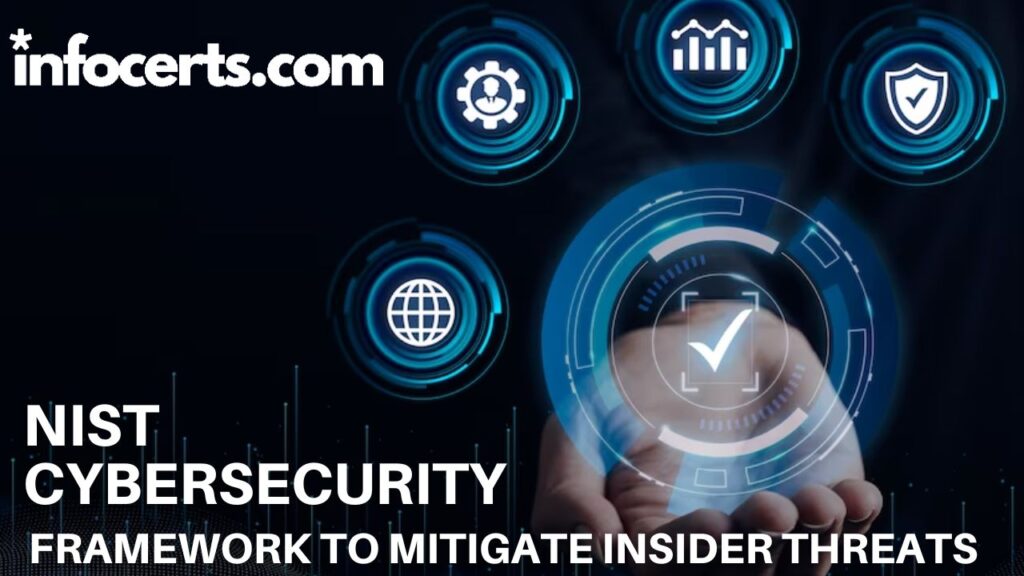Introduction: In today’s interconnected world, organizations face an ever-evolving threat landscape, with insider threats being one of the most challenging to detect and prevent. Insider Threat Mitigation Strategy refer to the risks posed by individuals within an organization who have authorized access to sensitive information or systems and intentionally or unintentionally misuse that access. To effectively mitigate this growing concern, organizations can turn to the National Institute of Standards and Technology (NIST) Cybersecurity Framework, a comprehensive set of guidelines and best practices. In this blog post, we will explore how organizations can leverage the NIST Cybersecurity Framework to tackle insider threats and enhance their overall security posture.
Identifying and Protecting Assets: The first step in mitigating insider threats is to identify and protect critical assets. The NIST Framework emphasizes the importance of understanding the organization’s systems, data, and infrastructure. By conducting thorough asset identification and risk assessment, organizations can pinpoint potential vulnerabilities and implement appropriate Access Controls. This includes strict authentication mechanisms, role-based access controls, and encryption of sensitive data, ensuring that only authorized individuals can access and modify critical assets.
Detecting Insider Threats: The NIST Framework advocates for continuous monitoring to detect anomalies and potential Insider Threats. Organizations should implement robust logging and monitoring systems to track user activities, network traffic, and data transfers. By analyzing these logs and employing advanced analytics and machine learning algorithms, suspicious patterns or behaviors can be identified promptly. This enables organizations to detect insider threats in real-time and respond effectively before they cause significant harm.
Responding and Recovering: In the event of an Insider Threat Mitigation Strategy incident, the NIST Framework emphasizes the importance of having an Incident Response plan in place. This includes predefined processes for containing the threat, investigating the incident, and restoring normal operations. Organizations should establish clear communication channels and designate incident response teams to handle insider threat incidents promptly and efficiently. Additionally, conducting thorough post-incident analysis helps organizations understand the root causes and implement necessary measures to prevent similar incidents in the future.
Training and Awareness: An essential aspect of mitigating insider threats is cultivating a security-conscious culture within the organization. The NIST Framework recommends providing comprehensive security awareness training to all employees, ensuring they understand the risks associated with insider threats and the organization’s policies and procedures. Regular training programs, simulated phishing exercises, and awareness campaigns can help employees identify suspicious activities and report potential insider threats promptly.
| NIST Cybersecurity Framework Mitigation Steps | Example |
| Identify and Protect Assets | Conduct asset inventory and risk assessment |
| Implement access controls and encryption | |
| Detect Insider Threats | Deploy logging and monitoring systems |
| Utilize advanced analytics for anomaly detection | |
| Respond and Recover | Establish incident response plan and processes |
| Designate incident response teams | |
| Training and Awareness | Provide comprehensive security awareness training |
Conduct simulated phishing exercises |
Conclusion: Insider threats pose a significant risk to organizations’ cybersecurity, but by leveraging the NIST Cybersecurity Framework, organizations can bolster their defenses and minimize the potential impact. By following the Framework’s guidelines for identifying and protecting assets, detecting insider threats, and responding effectively, organizations can proactively Mitigate the risks associated with insider threats. Combined with ongoing training and awareness initiatives, the NIST Framework provides a robust framework for organizations to address this critical cybersecurity concern and safeguard their valuable assets and sensitive information.
FAQs
- What is the NIST Cybersecurity Framework?
- What are insider threats?
- How can organizations use the NIST Cybersecurity Framework to mitigate insider threats?
- What role does training and awareness play in mitigating insider threats?
- Why is it important to have an incident response plan for insider threats?
——————————————————————————————————————–
Infocerts, 5B 306 Riverside Greens, Panvel, Raigad 410206 Maharashtra, India
Contact us – https://www.infocerts.com

